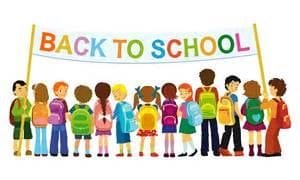Vygotsky’s theory of cognitive development was an early influence in my study of Models of Learning. His work gained wide attention in the 1970’s.
https://www.psychologynoteshq.com/vygotsky-theory/ BY PSYCHOLOGY NOTES HQ · MAY 2 2018
Lev Semenovich Vygotsky, a Russian psychologist who lived during the Russian Revolution, developed a theory of development known as the Sociocultural Theory of Cognitive Development in the early twentieth century. As a proponent of the sociocultural perspective to development, Vygotsky’s sociocultural theory gained worldwide recognition. It began to exert influence when his work was finally translated into English in 1962 and the importance of both sociocultural perspective of development and cross-cultural research was recognized.
‘Vygotsky’s main assertion was that children are entrenched in different sociocultural contexts and their cognitive development is advanced through social interaction with more skilled individuals. The Vygotsky theory of cognitive development is mainly concerned with the more complex cognitive activities of children that are governed and influenced by several principles. Believing that children construct knowledge actively, Vygotsky’s sociocultural theory is also one of those responsible for laying the groundwork for constructivism.’ Highlight or Color in red for distinguishing factors
ZONE OF PROXIMAL DEVELOPMENT
‘Vygotsky is most recognized for his concept of Zone of Proximal Development or ZPD pertaining to the learning of children. Children who are in the zone of proximal development for a specific task can almost perform the task independently, but not quite there yet. However, with an appropriate amount of assistance, these children can accomplish the task successfully….’
‘The lower limit of a child’s zone of proximal development is the level of analysis and problem-solving reached by a child without any help. The upper limit, on the other hand, is the level of additional responsibility that a child can receive with the support of a skilled instructor…’
‘As children are verbally given instructions or shown how to perform certain tasks, they organize the new information received in their existing mental schemas in order to assist them in the ultimate goal of performing the task independently… ..his conviction that social influences, particularly instruction, are of immense importance on the cognitive development of children.’
MORE KNOWLEDGEABLE OTHER
‘….These adults (parents and teachers) need to direct and organize the learning experiences to ensure that the children can master and internalize the learning.
….any person who possesses a higher skill level than the learner with regard to a particular task or concept is called a More Knowledgeable’…
SCAFFOLDING
‘….Scaffolding refers to the temporary support given to a child by More Knowledgeable Others, until such time that the child can already perform the task independently.’
‘Scaffolding entails changing the quality and quantity of support provided..in the course of a teaching session. The more-skilled instructor adjusts the level of guidance needed in order to fit the student’s current level of performance. For novel tasks, the instructor may utilize direct instruction. As the child gains more familiarity with the task and becomes more skilled at it, the instructor may then provide less guidance’.
….’ When the child has learned to complete the task independently, the scaffolds are removed by the adult, as they are no longer needed ‘.
….research attention has been shifted from the individual onto larger interactional units such as parent and child, teacher and child, or brother and sister.
‘Vygotsky’s theory likewise called attention to the variability of cultural realities,….. ….It would not be fitting, therefore, to utilize the developmental experiences of children from one culture as a norm for children from other cultures.’
‘Vygotsky’s sociocultural theory of cognitive development has significant ramifications in education and cognitive testing. Vygotsky was a strong advocate of non-standard assessment procedures for the assessment of what and how much a child has learned and in the formulation of approaches that could enhance the child’s learning. His ideas have effected changes in educational systems through the increased importance given to the active role of students in their own learning process and the encouragement of teacher-student collaboration in a reciprocal learning experience.’











